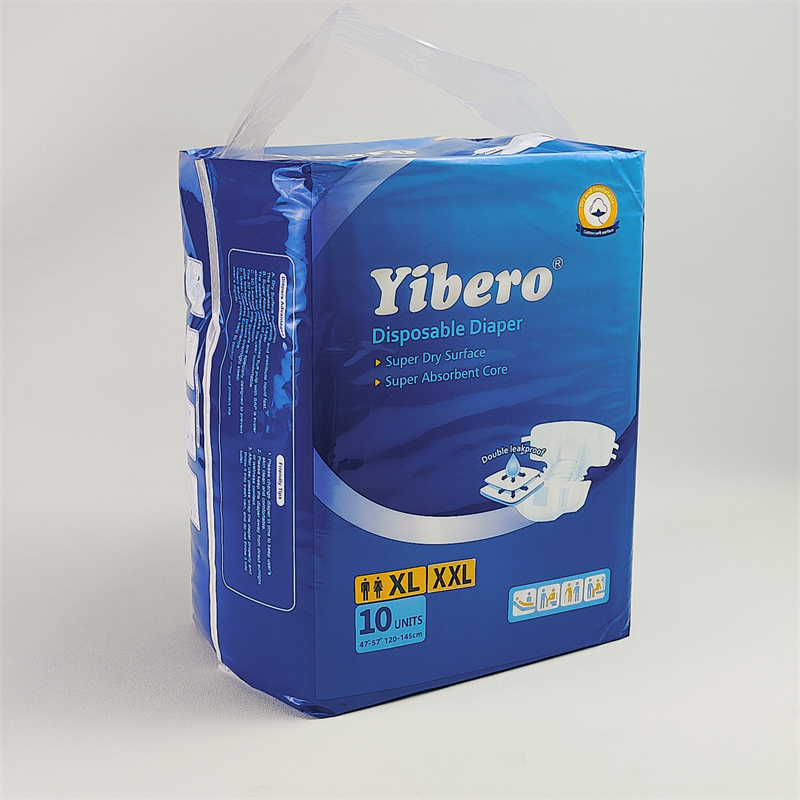Adult hospital diapers, also known as adult incontinence briefs, are designed to be worn by patients who are experiencing incontinence or bladder control issues while they are in the hospital. These diapers are typically disposable and made from materials that are absorbent, comfortable, and easy to change.
Here are some key features of adult hospital diapers:
Absorbent material: Adult hospital diapers are made from materials that are designed to be highly absorbent, such as fluff pulp and superabsorbent polymers. These materials can hold a large amount of liquid, helping to prevent leaks and keep the patient dry and comfortable.
Secure fit: Adult hospital diapers typically have adjustable tabs or fasteners that allow for a secure and comfortable fit. The tabs can be adjusted to fit the patient’s body and prevent leaks, while also allowing for easy changes as needed.
Comfortable design: Adult hospital diapers are designed to be comfortable for the patient to wear, with soft materials and a snug fit that helps to prevent chafing and irritation. The diapers may also have features such as elastic leg cuffs or a contoured shape to improve comfort and prevent leaks.
Easy to change: Adult hospital diapers are designed to be easy to change, adult hospital diapers with simple fasteners or tabs that can be undone quickly and easily. This allows for faster and more efficient changes, which is important in a hospital setting where time is often of the essence.
Disposable: Adult hospital diapers are typically disposable, which means that they can be thrown away after use. This makes them more hygienic and reduces the risk of infection or cross-contamination.
It’s important to note that adult hospital diapers may have different features and requirements depending on the specific hospital or healthcare facility. Some hospitals may require specific brands or types of adult diapers, while others may have specific protocols for changing and disposing of the diapers. It’s important to follow all hospital guidelines and procedures when using adult hospital diapers to ensure the safety and comfort of the patient.
The frequency of adult hospital diaper changes can vary depending on the individual patient’s needs and the severity of their incontinence. In general, it is recommended to change an adult hospital diaper as soon as it becomes wet or soiled to prevent skin irritation, discomfort, and the risk of infection.
Here are some general guidelines for how often adult hospital diapers should be changed:
Check the diaper frequently: It’s important to check the diaper frequently, especially during periods of high fluid intake or when the patient is experiencing diarrhea. Checking the diaper every 2-3 hours is a good general guideline.
Change the diaper when it becomes wet or soiled: As soon as the diaper becomes wet or soiled, it should be changed to prevent skin irritation or infection. This may mean changing the diaper more frequently than every 2-3 hours, depending on the individual patient’s needs.
Use a moisture indicator: Some adult hospital diapers have a moisture indicator that changes color when the diaper becomes wet. This can be a helpful tool for caregivers and healthcare professionals to determine when a diaper needs to be changed.
Consider the patient’s mobility: If the patient is unable to move or change positions easily, it may be necessary to change the diaper more frequently to prevent skin breakdown or pressure sores.
It’s important to note that these are general guidelines, and the frequency of adult hospital diaper changes may need to be adjusted based on the individual patient’s needs and the recommendations of their healthcareprovider. Factors such as the patient’s fluid intake, medical condition, and level of mobility can all impact how often the diaper needs to be changed. Caregivers and healthcare professionals should work together to develop an individualized plan for diaper changes that takes into account the patient’s unique needs and circumstances.
